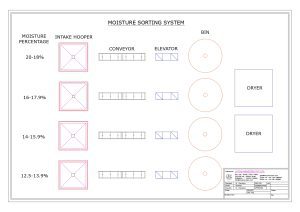Introduction:
Paddy is unique among food grains due to its post-harvest behavior, especially its moisture sensitivity. Efficient handling and drying play a crucial role in ensuring high-quality rice production and energy-efficient processing.
All the food grains except paddy are lesser complex. Paddy needs some extra care to make best out of it commercially as well as technically.
The toughest part of handling the paddy is moisture management. Be it from the field after harvesting or receiving the high levels of moisture at the mill. Paddy above 20% needs a careful handling. The moisture we measure e.g. 12% is always a weighted average where the range of moisture may be between 11 to 14%. Single grain moisture meter measuring the moisture of 100 grains give much better idea about the range.
The regions where the paddy moisture during harvest season is more than 20% as an average and 25% as maximum need to be carefully handled. The diagram as a layout is suggestively recommending how to sort the moisture ranges of 2% each and dried separately. The mixture of 12 to 20% will consume more energy for drying and would have moisture of grains below 12% and still undried kernels above 13% as well.
The layout is simple with minimum level of automation; one can fully automate it as well having single chain conveyor with single elevator.

Key Benefits of Moisture Sorting:
-
Reduces energy consumption during drying
-
Prevents over-drying (which leads to cracks and quality loss)
-
Improves mill efficiency and final grain quality
-
Helps avoid mold formation and spoilage during storage
Tips for Moisture Sorting:
🌾 Tip: Always sort paddy by 2% moisture ranges (e.g., 12–14%, 14–16%, etc.) before drying to optimize energy use and preserve grain integrity.
Conclusion:
Reinforce the takeaway and suggest potential next steps or tools.
With simple layout modifications and strategic sorting based on moisture ranges, both small and large mills can improve the technical and commercial value of paddy. Automation can be introduced gradually to scale operations.

